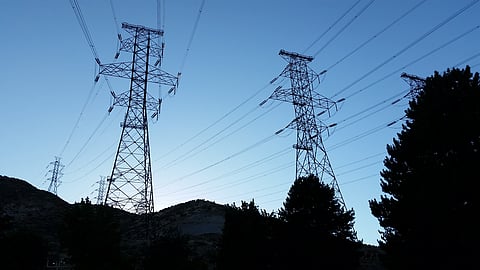
- NEWS
- the EDIT
- COMMENTARY
- BUSINESS
- LIFE
- SHOW
- ACTION
- GLOBAL GOALS
- SNAPS
- DYARYO TIRADA
- MORE

To sustain the rapid growth of Cebu Province, business leaders are banking on the ample power supply and baseload reserves that can be produced by new power plant facilities.
Mandaue Chamber of Commerce and Industry (MCCI) incoming president Mark Ynoc, in a statement, said energy as a crucial element in this period of economic rebound and “especially in preparation for the anticipated arrival of investments and increase in population growth.”
Cebu, a vital cog in the Philippines' rapid economic growth, registered a growth rate of 6.9 percent in 2022 led by economic powerhouse Metro Cebu and its highly urbanized cities Cebu City (8.4% growth), Mandaue City (9.0%), and Lapu-Lapu City (13.2%).
Pre-pandemic, the National Economic and Development Authority had identified the potential of Cebu for new investments in heavy and extractive industries including shipbuilding and allied industries, automotive and parts manufacturing, aerospace parts, resource-based industries, and fabricated metals.
“When there is a pressing need for power then we definitely need additional generation capacity and infrastructure,” said Ynoc.
Business groups earlier said that there is the fear of power shortages on the other hand, as weaknesses in the country's and Visayas's power infrastructure came into focus during the Western Visayas blackouts that had cost Iloilo Province alone P5.7 billion in economic losses.
Visayas' particular vulnerability, vis-a-vis Luzon and Mindanao was further exposed during the Panay Island blackouts when the National Grid Corporation of the Philippines (NGCP) projected a decline to some 178 megawatts (MW) in the power reserves of Central Philippines.
With an available generating capacity of 2,411 megawatts (MW) and a system peak demand of 2,117 MW, Visayas had a margin of only 269 MW as power reserves in 26 January, according to the NGCP, the thinnest power reserves among the major island grids compared to Luzon's 3,608 MW power reserves and Mindanao's 802 MW in reserves.
Cebu business leaders expressed hope in new power plants coming on grid with the Department of Energy's issuance last December 2023 of Certificates of Endorsement for 21 projects for system impact study (SIS).
The SIS, a stress test on the plant's impact on the grid, is a prerequisite to the Energy Regulation Commission's green light to operate a new power generation plant.
Among the new power plants up for SIS is Therma Visayas' 169 MW coal plant expansion in Toledo City.
“More power supply is always better,” said Cebu Chamber of Commerce and Industry president Charles Kenneth Co.
Meanwhile, former Mandaue Chamber of Commerce and Industry president Steven Yu said the economic impact of the possible power outages due to lack of electricity outweighs the environmental concerns about the use of coal.
“While we are scaling up on our RE (renewable energy) generation capacity, this will help stabilize our power supply versus demand and avoid costly blackouts. The negative environmental effects are being outweighed by the positive impact to the economy and other offsetting carbon reduction measures.”
CCCI's Co added how Aboitiz "being a responsible corporate citizen, will surely use green technology to keep the coal clean.”
TVI’s expansion of the coal plant in Toledo City will be using the same Circulating Fluidized Bed (CFB) technology that is being used in Units 1 and 2 of TVI to minimize coal dust emissions that can harm the atmosphere.
Last May 2023, the Visayas grid experienced its highest power demand peaking at 2,450 megawatts with Cebu province accounting for half of the region’s total demand.
“All roads lead to Cebu when we talk about power consumption in the Visayas,” said
NGCP assistant vice president and head for public affairs, Atty. Cynthia Perez-Alabanza as Cebu hit its peak demand again in December 2023, stressing the need for constructing additional inland power plants to bolster existing capacity.
“Now, with the economy fully reopening, we are witnessing a substantial surge in power requirements. All the more Cebu needs more power plants,"said Alabanza.
According to Abner G. Bardoquillo, NGCP network operations senior manager for Visayas systems operations, with the rapid growth in investments and population, Cebu needs to build more power plants, in order not to rely on supplies from neighboring islands.
Former Cebu Chamber of Commerce and Industry president Felix Taguiam had earlier stated that if Cebu can achieve self-sufficiency in power generation, it could also alleviate the issue of costly electricity in Cebu.
The DOE and the NGCP have previously cited Cebu as among the main sites for large generation capacity additions, through power plants that can consistently and continuously produce electricity at scale.
